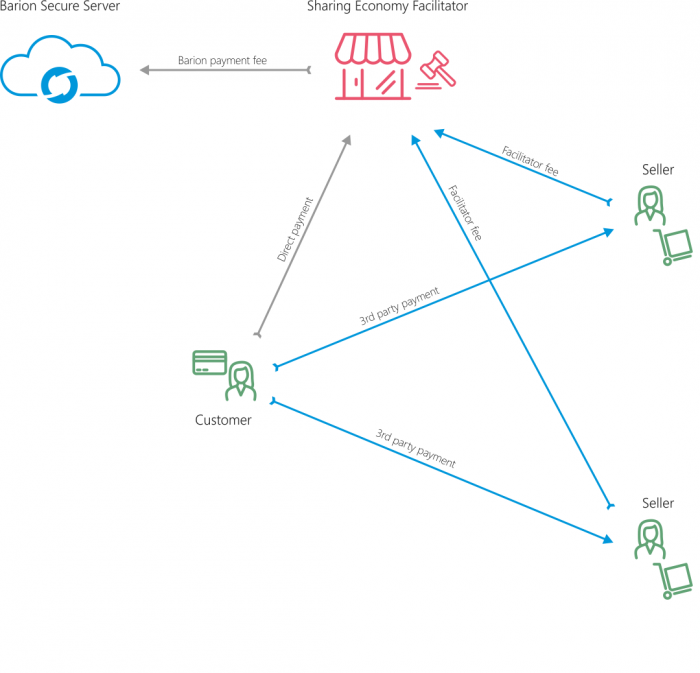Facilitated payments: Difference between revisions
No edit summary |
|||
| Line 1: | Line 1: | ||
{{PageTitle|title=Marketplace and facilitated payments}} | {{PageTitle|title=Marketplace, sharing economy, and facilitated payments}} | ||
{| style="margin-left:2em;" align="right" | {| style="margin-left:2em;" align="right" | ||
Revision as of 10:21, 15 December 2017
Marketplace, sharing economy, and facilitated payments
Payment facilitation is a special kind of payment scenario, where the payment itself is supervised by a third party. This means that a supervising shop (called the facilitator) defines all parameters for a payment, but it does not take part in the process as a payee. This is useful in marketplace and sharing economy scenarios, where the customer buys products and services from various sellers, under the management of a service provider. The service provider may also charge fees for the service that is paid by the seller.
Example: consider calling an Uber - the car driver is the seller, the passenger is the customer, and the company Uber is the facilitator. The money travels between the passenger and the driver, while the company deducts a fee from the driver.
Prerequisites
To successfully implement facilitated payments, you need to familiarize yourself with the simple Responsive Web Payment scenario, and, in case you wish to combine it with the reservation feature, also Reservation payments. The preparation of payments, redirection to the Barion Smart Gateway and handling the Callback mechanism are identical to all other scenarios.
The marketplace scenario
The payment process is similar to all other scenarios. The only difference is that the API calls are placed by the facilitator. Neither the customer nor the payee takes any action.
The basic structure of a facilitated payment consists of the facilitator, the customer, and one or more sellers. See the figure below.
Reference
- /Payment/Start
- /Payment/GetPaymentState
- /Payment/FinishReservation (if applicable)
